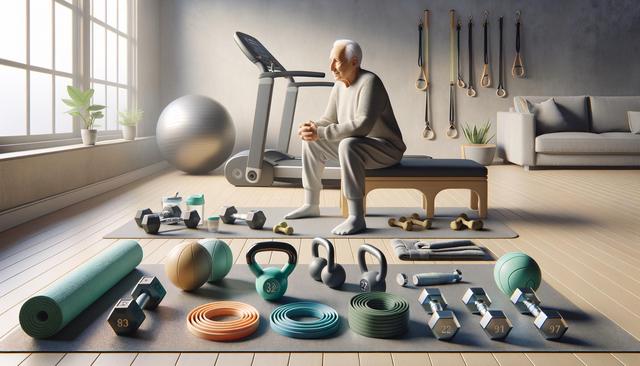Why Fitness Matters More as We Age
As the years go by, maintaining an active lifestyle becomes increasingly vital for overall well-being. For seniors, regular physical activity supports cardiovascular health, strengthens bones and muscles, improves balance, and even enhances mental clarity. Aging often brings natural changes such as decreased muscle mass, joint stiffness, and slower metabolism. Engaging in fitness routines tailored to these changes can help preserve independence and reduce the risk of chronic illnesses like diabetes, arthritis, and heart disease. More importantly, staying active can boost confidence and provide valuable social interaction, especially after periods of isolation or inactivity.
Many seniors are discovering that fitness doesn’t have to be intense or high-impact to be effective. Low-impact activities are not only easier on the joints but also have been shown to contribute significantly to longevity and quality of life. Whether it’s walking in the park, attending a gentle yoga class, or swimming laps at a local pool, these activities offer both physical and emotional rewards. The key is consistency and choosing exercises that align with personal goals and physical capabilities.
Low-Impact Activities with Big Benefits
One of the most accessible ways for seniors to stay fit is through low-impact exercises. These activities minimize wear and tear on the body while still providing essential movement. Common low-impact options include:
- Walking: A simple yet effective way to improve cardiovascular health and mood.
- Water aerobics: Gentle on joints and excellent for building endurance and flexibility.
- Chair yoga: Perfect for those with limited mobility, focusing on stretching and breathing.
- Resistance band training: Helps maintain muscle tone without heavy weights.
These options can usually be performed independently or in group settings, promoting both physical activity and social engagement. Community centers and senior organizations often offer classes designed specifically for older adults, ensuring that exercises are safe and properly guided. With seniors getting active again, these group settings also help create a sense of belonging and motivation to maintain a regular routine.
Strength Training for Stability and Independence
While cardio and flexibility exercises are important, strength training plays a crucial role in supporting daily function and preventing injury. As muscle mass naturally decreases with age, incorporating strength-based movements can help counteract this decline. Seniors can benefit from exercises like:
- Bodyweight squats or sit-to-stand movements from a chair
- Wall push-ups to build upper body strength
- Light dumbbell or resistance band curls for arm strength
These exercises help improve stability, making everyday tasks like climbing stairs or carrying groceries easier and safer. It’s important to start with light resistance and gradually increase as strength builds. Consulting a physical therapist or certified fitness instructor can ensure proper form and help prevent injury. For those new to strength training, supervised environments can be especially beneficial. This renewed focus on functional strength underscores why seniors are getting active again — not just for fitness, but for empowerment.
Group Classes and Social Wellness
One of the most enjoyable aspects of senior-friendly fitness is the opportunity for social connection. Group classes tailored to older adults combine physical activity with the chance to meet others and build friendships. These classes often include:
- Tai Chi: Encourages balance, focus, and relaxation through slow, flowing movements.
- Zumba Gold: A lower-intensity dance class adapted for senior participants.
- Balance and fall prevention workshops: Designed to reduce the risk of falls and improve coordination.
These group-based programs often take place in community centers, local gyms, or even outdoor settings when weather permits. The social aspect of these classes can be just as beneficial as the physical activity itself, especially for seniors who may be dealing with feelings of loneliness or isolation. Being part of a community of like-minded individuals can provide the encouragement needed to stay active consistently. It’s no surprise that these offerings are growing in popularity as more seniors prioritize their health and social well-being.
Technology and At-Home Fitness Options
Technology is playing a growing role in making fitness more accessible to seniors. From virtual classes to fitness tracking devices, there are now more ways than ever to stay active from the comfort of home. Online platforms offer a variety of senior-focused workout videos, including seated exercises, guided meditation, and light strength training. These resources are especially valuable for those with limited transportation or who prefer exercising privately.
Wearable fitness trackers can also motivate seniors by helping them monitor daily steps, heart rate, and sleep patterns. Some devices even offer reminders to move, contributing to better daily habits. Meanwhile, voice-enabled assistants can be used to set workout reminders or play guided exercise routines. For tech-savvy seniors or those with support from family members, integrating digital tools can enhance motivation and consistency.
Additionally, many health insurance plans and senior organizations provide access to virtual fitness programs at no extra cost. These programs often include live-streamed classes, on-demand videos, and wellness coaching. The flexibility of at-home options ensures that seniors can maintain a routine that fits their lifestyle, making it easier for them to stay active no matter their schedule or mobility level.
Conclusion: Embracing Movement at Any Age
Fitness is not bound by age, and seniors across the globe are proving that it’s never too late to start moving. With a wide range of senior-friendly fitness options available — from gentle yoga and aquatic workouts to strength training and digital platforms — there’s something to suit every preference and ability. The key is to find enjoyable, sustainable activities that promote not just physical health, but also mental and emotional well-being.
As seniors get active again, they’re reclaiming control over their health, building community, and enhancing their quality of life. Whether participating in a group class, walking a familiar trail, or trying a new virtual workout, the journey to better health is always within reach. By embracing movement and making it a regular part of daily life, seniors can look forward to more independence, vitality, and joy in the years ahead.




Leave a Reply